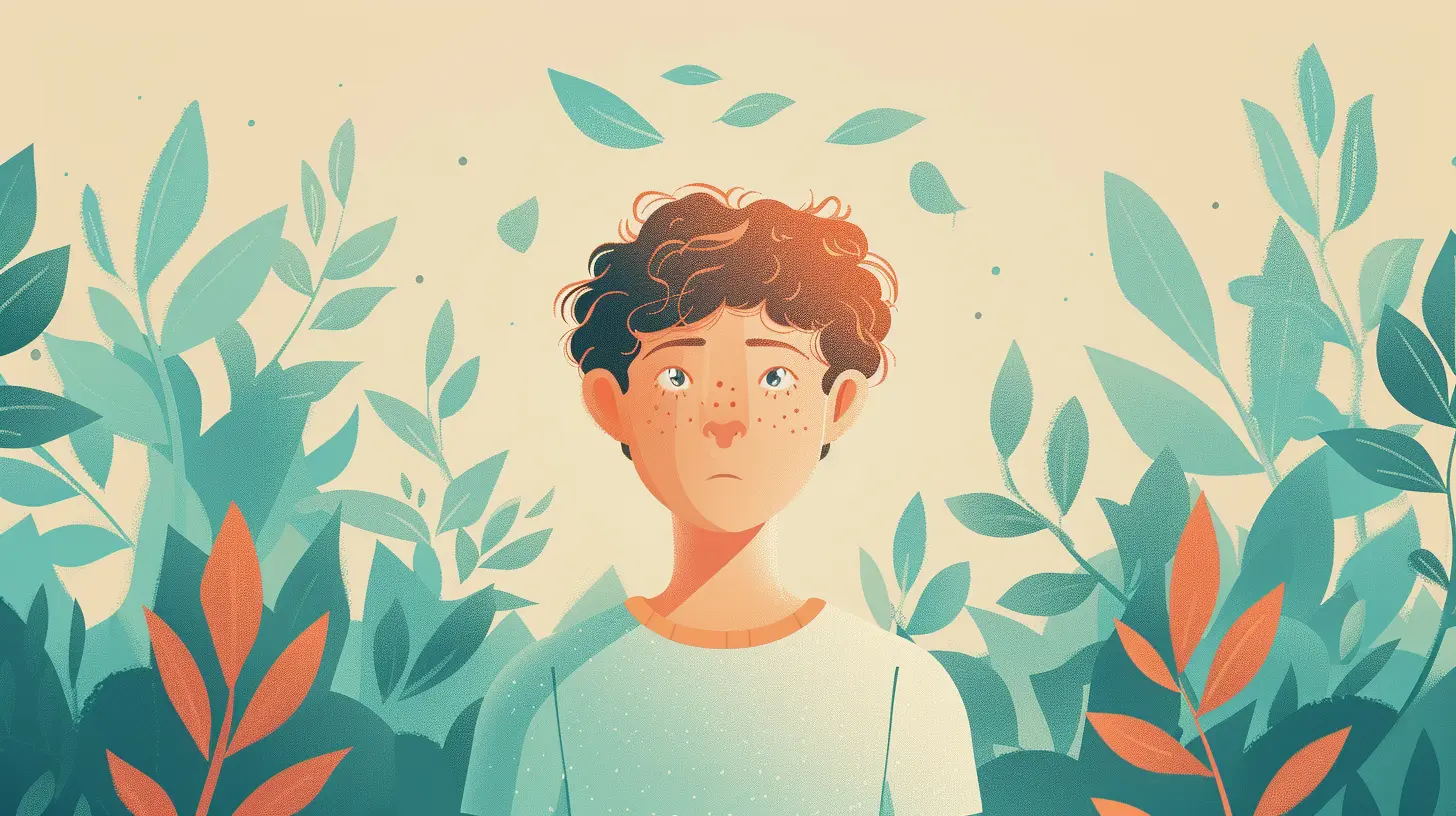How to Foster Social Confidence in a Child Who Experiences Anxiety
10 July 2025
Parenting a child who feels anxious in social situations can feel like balancing on a tightrope—every step forward feels delicate, and you're constantly wondering if you're doing it right. First of all, take a deep breath. You’re not alone, and your child isn’t broken. Social anxiety in children is more common than we think, and with the right support and encouragement, your little one can blossom into a confident, connected individual.
In this guide, we’re going to walk through how to foster social confidence in a child who experiences anxiety—step by step, heart to heart.
What Does Social Anxiety Look Like in Kids?
Before we dive into building confidence, let’s talk about what anxiety might look like in your child. Because it doesn’t always come with flashing lights or big signs screaming “I’m anxious!”Sometimes, it’s subtle:
- Avoiding eye contact.
- Clinging to you in groups.
- Refusing to speak up in class.
- Melting down before birthday parties or playdates.
- Complaining of stomach aches before school.
Sound familiar?
Social anxiety often masquerades as shyness or even defiance, but at its core, it’s fear—fear of being judged, fear of making mistakes, fear of standing out. And it’s deeply uncomfortable for kids who experience it.
But here’s the good news—you can help your child move through this. Bit by bit. Day by day.
Start With Empathy, Not Fixing
One of the most powerful tools in your parenting toolbox isn’t a technique—it’s empathy. When your child is struggling, what they need most is to feel safe and understood.Instead of dismissing their fears (“Don’t worry, it’s no big deal”), try validating their feelings:
> “I can see that talking in front of the class feels really scary for you. That makes a lot of sense.”
You're not coddling them—you’re connecting. And connection is the foundation of confidence.
Reframe Anxiety as a Strength
Most kids (and grown-ups too!) see anxiety as a weakness. But what if we flipped that script?Children with social anxiety are often highly sensitive, thoughtful, and observant. That’s not a flaw—it’s a gift. The goal isn’t to erase their sensitivity but to help them use it as a superpower.
Let them know it’s okay to be the quiet one in the room. The goal isn’t to be the loudest kid—it’s to help them feel comfortable being themselves in a group. Big difference.
Teach Them About Their Brain
Here’s a fun fact: Kids love to understand how things work—especially their own brains. So give them a mini science lesson tailored for their age level.Explain how the “amygdala” (a tiny almond-shaped part of the brain) acts like an alarm system. Sometimes, it goes off when there's no real danger—like during a spelling bee or at a new friend’s house.
You might say:
> “Your brain is trying to protect you, just like a superhero. But sometimes it gets a little confused and thinks something is scary when it’s actually safe.”
This helps kids understand their anxiety isn’t their fault—it’s just their brain doing its job a little too well.
Small Steps, Big Wins
Social confidence doesn’t appear overnight. It grows slowly—like a tree from a tiny seed. What matters most is taking small, consistent steps outside their comfort zone.Think practical and low-pressure, like:
- Saying hello to a neighbor.
- Asking the cashier a question.
- Ordering food at a restaurant.
- Attending a short playdate.
Let your child know that bravery isn’t about not feeling scared—it’s about doing things even when we feel nervous.
Celebrate every small “win” with genuine praise:
> “I’m so proud of you for walking up to the teacher today. I know that wasn’t easy, and you did it anyway.”
These moments stack up, fueling their belief in themselves.
Practice Role-Playing at Home
Role-playing is like a social skills gym. You get to practice real-life scenarios in a safe, judgment-free space.Run through situations that cause anxiety, like saying hi to a new friend or answering a teacher’s question. Take turns playing different roles, and keep it light and playful.
This prepares your child’s brain to handle the real thing with less fear. It’s like giving them a mental rehearsal before the opening act.
And bonus? It’s a great bonding activity.
Create a Social Toolkit
Every child deserves a toolkit—a go-to list of tricks and techniques they can use when anxiety creeps in.Here are a few “tools” to teach your child:
- Belly breathing: Slow, deep breaths to calm the nervous system.
- Mantras: Phrases like “I can do hard things” or “It’s okay to feel nervous.”
- Visualization: Imagining a safe or happy place when they feel overwhelmed.
- Body language practice: Standing tall, making eye contact—tiny signals that cue confidence.
Encourage your child to build their own personalized toolkit. Let them decorate it, draw it in a notebook, or carry a small version in their backpack.
Limit Comparison and Over-Scheduling
In today’s hyper-connected world, it’s easy for anxious kids to feel “less than” their louder, more outgoing peers. It's up to us to help them tune out that noise.Emphasize effort over outcome. Praise their attempts, not just their successes.
Also—don’t overload their schedule. Many anxious kids need downtime to recharge. Social growth happens best when they’re well-rested and not burning out from constant stimulation.
Foster Genuine Friendships
Not every child needs a million friends. One or two close, kind buddies can make a world of difference.Help your child find friends who share similar interests:
- Local art or LEGO classes
- Library reading groups
- Science clubs or sports teams with a positive vibe
Sometimes kids with social anxiety thrive better in smaller, structured environments rather than chaotic group settings. Follow their lead and look for what lights them up.
Be Their Safe Landing Spot
At the end of the day, your child needs one thing from you more than anything else: to feel unconditionally loved and accepted.You are their home base, their anchor. When they face the social storms of the world, knowing they have a soft place to land can give them the courage to keep sailing forward.
Listen more than you speak. Hug more than you direct. And remind them—over and over—that they are enough, exactly as they are.
When to Seek Professional Help
If your child’s anxiety is getting in the way of daily life—like refusing to go to school, avoiding all social contact, or having frequent panic attacks—it might be time to seek support.Therapists who specialize in cognitive-behavioral therapy (CBT) for kids can do wonders. Many also use play therapy or exposure therapy in kid-friendly ways.
Getting help is not a failure—it’s a loving step toward giving your child the tools they need to thrive.
Final Thoughts: Growing Confidence, One Brave Step at a Time
Social anxiety doesn’t disappear with a magic wand. But with your support, your patience, and your belief in your child, you can absolutely help them build the courage to face the social world with confidence.Think of yourself as their coach—and their cheerleader. Some days will feel like a win, and others will feel like a step backward. That’s okay. Progress is a messy, beautiful journey.
And always remember: your child doesn’t need to be the life of the party to be successful. They just need to feel safe being themselves—and that’s more than enough.
all images in this post were generated using AI tools
Category:
Dealing With AnxietyAuthor:

Austin Wilcox
Discussion
rate this article
2 comments
Grace McCall
Encouraging small, gradual social interactions can significantly help anxious children build confidence. Providing a supportive environment, modeling positive behaviors, and celebrating small successes are essential strategies for fostering their social skills.
November 27, 2025 at 4:34 AM

Austin Wilcox
Thank you for highlighting the importance of gradual interactions and a supportive environment! Celebrating small victories truly makes a difference in building a child's social confidence.
Ardyn McCray
In gentle whispers, nurture their heart, With patience, let their brave spirit start. Through laughter and light, fears drift away, Building bonds that brighten each day.
August 6, 2025 at 4:51 PM

Austin Wilcox
Thank you for capturing the essence of nurturing a child's spirit! Your words beautifully emphasize the importance of patience and positivity in building their confidence.


